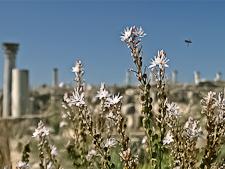
Ouch! To some, the sight of a honeybee evokes a reaction of fear of a painful sting. However, the honeybee (Apis sp.) also provides us with food, and not only in the form of honey. One-third of the foods most humans eat are dependent on bees for pollination. Bee colonies also serve as an example of how a social group can function fluidly with hard work, unity and cooperation. Unfortunately, our current agricultural system, the very practice the honeybee supports, may be causing massive declines in bee populations, a problem called Colony Collapse Disorder (CCD).

Scientists in Europe have found evidence that certain systemic pesticides have devastating effects on pollinators, especially honeybees. Such pesticides lead to poor immune function in bees, which in turn leaves bees susceptible to viral and fungal infections. Because systemic pesticides don't immediately kill bees, they are often overlooked as the source of the problem.

References
Johnson, K. 2010. "Scientists and Soldiers Solve a Bee Mystery." The New York Times. October 6th, 2010. Accessed March 3rd, 2011 at: http://www.nytimes.com/2010/10/07/science/07bees.html?_r=1


than ten years of experience. Following a near-death experience, Maryam began working on films relating to health and the environment, including a documentary about the Exxon Valdez oil spill. After realizing the magnitude of the Colony Collapse Disorder crisis, she became highly motivated to work on Vanishing of the Bees. She believes bees can be viewed as a sister society and should be valued as such.
Video is copyright protected and is used by permission by George Langworthy and Maryam Henein. Video may not be reproduced without permission. Visit the website http://www.vanishingbees.com to find a screening near you or to order your own DVD. Photo of the authors are used with the permission of George Langworthy and Maryam Henien. Photo of the bee is used with permission of Kathryn Pardo and Jonmikel Pardo.